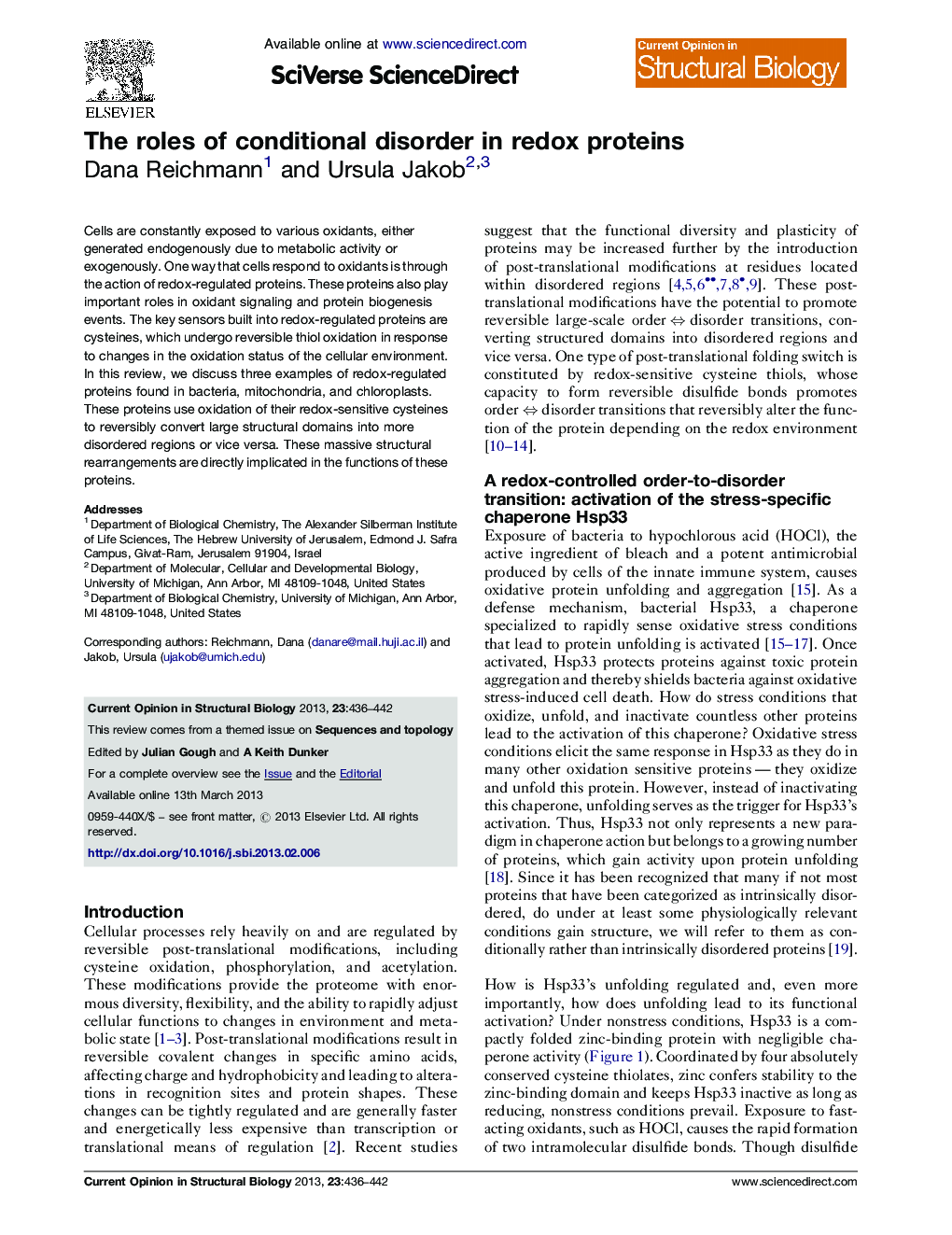| Article ID | Journal | Published Year | Pages | File Type |
|---|---|---|---|---|
| 1979135 | Current Opinion in Structural Biology | 2013 | 7 Pages |
Cells are constantly exposed to various oxidants, either generated endogenously due to metabolic activity or exogenously. One way that cells respond to oxidants is through the action of redox-regulated proteins. These proteins also play important roles in oxidant signaling and protein biogenesis events. The key sensors built into redox-regulated proteins are cysteines, which undergo reversible thiol oxidation in response to changes in the oxidation status of the cellular environment. In this review, we discuss three examples of redox-regulated proteins found in bacteria, mitochondria, and chloroplasts. These proteins use oxidation of their redox-sensitive cysteines to reversibly convert large structural domains into more disordered regions or vice versa. These massive structural rearrangements are directly implicated in the functions of these proteins.
► Disulfide bond formation promotes large-scale order ⇔ disorder transitions. ► Redox-mediated unfolding of Hsp33 leads to its activation as chaperone. ► Redox-mediated folding of COX17 impacts its function as copper chaperone. ► Redox-mediated folding of CP12 makes it the ‘on–off’ switch of the Calvin cycle. ► Developments in structural techniques show promise in revealing protein disorder.
